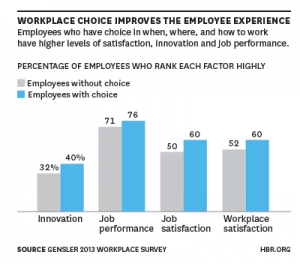— March 25, 2019

Free-Photos / Pixabay
Today, more and more companies are emptying their cubicles and opting for a virtual workforce. For many organizations, the cost-cutting nature of virtual collaboration, which allows companies to save money on real estate costs and decreases the need for business travel, is simply too hard to resist at a time when budget cutting is a top priority. Unfortunately, just because there’s been a boom in working virtually, this doesn’t mean companies opting to go virtual are getting it right.
In today’s complex organizations, remote work has become practically ubiquitous. A 2018 IWG study found that 70 percent of professionals work remotely at least one day a week. Gallup’s 2016 State of the American Workplace report found that 24 percent of employees spend 80 percent or more of their time working remotely. It’s not hard to see why. Advances in technology have made it easier to organize and manage dispersed groups of people. And competitive pressures and the needs of today’s global economy have made virtual teams a necessity for some organizations.
Unfortunately, having solid business reasons for implementing a virtual strategy does not mean that strategy is always going to be executed well. Many companies have virtual teams that are ineffective and failing the company.
OnPoint Consulting conducted a robust global research study of nearly 50 virtual teams across various industries and found that 27 percent of teams were not fully performing. Our research reinforced the findings of a study conducted by MIT Sloan Management Review, which found that only 18 percent of the 70 global business virtual teams assessed were found to be highly successful. That means a whopping 82 percent did not achieve their goals.
The cause, we believe, is that too many organizations approach virtual teams as if the dynamics are the same as those for co-located teams. We found that many organizations simply recycled the same guidelines and best practices they were using for their co-located teams and hoped for the best.
OnPoint’s research and experience pinpointed several common reasons why virtual teams fail, but several stand out.
The Top 5 Reasons Why Virtual Teams Fail
1. Ineffective Leadership.
Leadership is the most important factor in the success of virtual teams. Some warning signs of an ineffective team leader include:
- The team is not meeting its performance objectives and deliverables are delayed or of poor quality.
- Relationships between the team members and the leader are damaged.
- Team members are not clear about the team’s direction or purpose.
- Team members are not engaged.
To be effective, team leaders in a virtual environment must be especially sensitive to interpersonal, communication, and cultural factors to overcome the limitations of distance. Organizations should select team leaders who are comfortable with technology and have the interpersonal skills required to effectively lead in a virtual environment.
Successful team leaders are able to adjust their behavior and leverage technology to get their teams organized, set goals, and establish the direction they need the team to go. They also always keep members engaged through timely feedback, team building exercises, and periodic face-to-face meetings.
2. Lack of Clear Goals or Priorities.
As with any virtual or co-located team, a lack of clear goals and priorities will inhibit performance. And because it is tougher to communicate with and inform geographically-distributed team members, this can be an even bigger challenge for virtual teams. The most effective virtual teams reassess goals as priorities shift over time.
When new virtual teams are formed, the most effective teams meet face-to-face within the first 90 days to outline team goals and objectives. These kick-off meetings also help to build relationships and outline responsibilities. During the meeting, the team should clarify roles and establish how the team will work together. Once things are underway, the leader can use virtual meetings and regularly update postings on the team’s preferred communications channel (such as Slack or Teams) to inform everyone about any updates and changes over time.
3. Lack of Clear Roles Among Team Members.
In virtual teams, it’s especially important for team members to clearly understand their individual roles. A lack of clear accountability can have a huge impact on virtual teams.
High-performing virtual teams establish clear roles up front and continually reassess and ensure clarity of roles over time. Clarifying accountabilities and outlining how and when team members should work together minimizes delays and inefficiencies that are common when working virtually. One global information technology team in our study created a playbook which provided background on each team member and clearly laid out how each person was to contribute. When questions arose during large, complex projects, team members would consult the virtual playbook to determine which team member needed to be consulted. Many of the less effective teams in our study did not clarify roles during their launch or often failed to revisit roles as things changed during their projects.
4. Lack of Cooperation.
When a diverse group of individuals is asked to work together to accomplish shared objectives, it takes time to build an atmosphere of collaboration. And because there is a lack of face-to-face contact inherent in virtual teamwork, the process of establishing trust and relationships can be even more arduous.
Office cliques and the conflicts that come with them can still form with virtual teams just as they can with co-located teams. One team in our study provides a good example of this problem. Two-thirds of the team’s members were located in the same office while the remaining one-third were scattered in different sites around the world. Naturally, the team members in the same office developed stronger relationships with one another then they did with the members who worked outside the main hub.
Unfortunately, this setup led to the formation of subgroups which began to impede team collaboration. Several team members routinely worked together on projects and didn’t keep others informed. Over time, this lack of collaboration led to distrust amongst team members. The high-performing virtual teams in our study were better equipped to handle these kinds of conflicts than the low-performing teams.
5. Lack of Engagement.
When working virtually, it can be difficult to assess individual team members’ levels of engagement because they are in different locations and rarely meet face-to-face. To avoid this common problem, leaders and team members should proactively look for signs of disengagement.
Team leaders should regularly assess their teams by asking the following questions:
- Are all team members contributing to conversations and projects?
- Are they attending and actively participating in team meetings?
- Are team members motivated to take on new work or are they feeling overwhelmed?
- Are people working well together or is there frequent and unproductive team conflict?
Looking out for these common red flags can help prevent engagement issues from derailing a team. With virtual teams, people can easily become bored and disengaged because there is a lack of dynamic face-to-face interaction and there are more distractions. If virtual team leaders constantly assess their team members’ levels of engagement and monitor performance to ensure everyone is fully accountable, the team’s effectiveness will be much improved.
Poor communication, a lack of engagement, and lack of attention during virtual meetings are a few of the warning signs that a high touch environment has not been achieved. While meeting face-to-face requires time and expense, virtual teams that invest in one or two such meetings per year perform better overall than those that do not.
Leveraging tools such as video conferencing and communication software to increase spontaneous communication can also help. Teams should also use tools such as project management software to create a sense of shared space. And finally, every team should develop a communication strategy that is continuously re-examined to ensure everyone is comfortable with and engaged by the communication set up.
Given the prevalence of virtual teamwork and its importance in achieving business objectives, we were surprised our study revealed that so many teams were ineffective. But what was most startling was that many companies either don’t realize their teams are underperforming, or despite their initial investments in these teams, they don’t take the time to focus on enhancing their effectiveness. The good news is that there are numerous strategies that organizations and team leaders can employ that will improve the performance of their virtual teams.
Organizations that get it right know that virtual teams and co-located teams cannot be built and managed in the same ways. The organizations that take the time to understand exactly what they are getting into will have substantially better odds for success than those who start their teams on a whim without proper planning or follow up. By educating leaders and team members on the common pitfalls that are out there, we hope to help organizations create strong, prosperous virtual teams.
Business & Finance Articles on Business 2 Community
(169)





